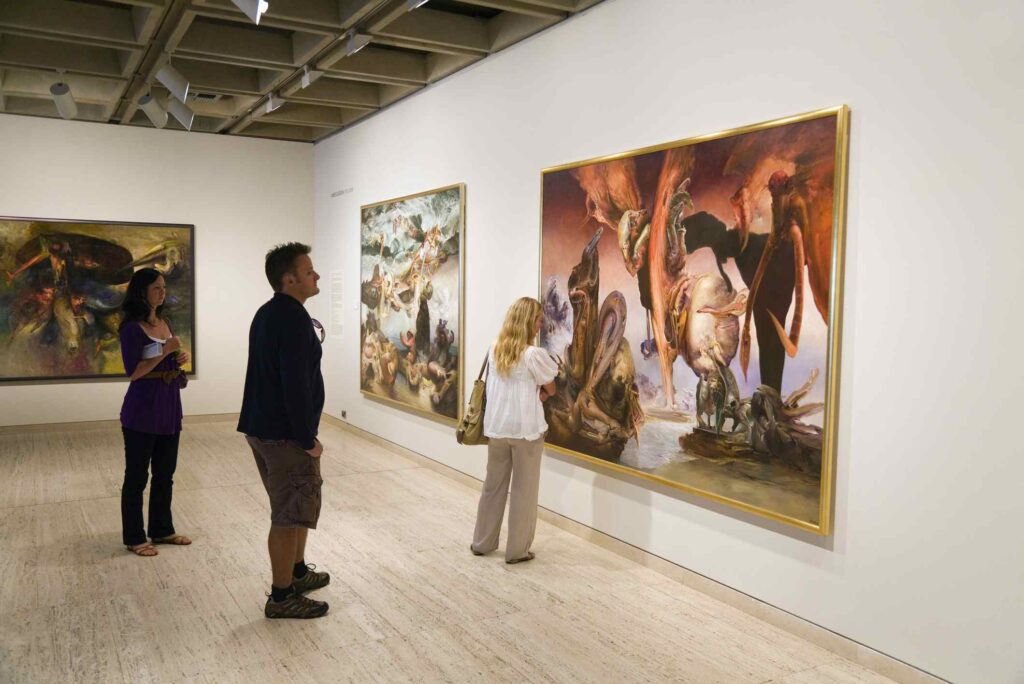How To Get Paintings Into An Auction?

You might be an art lover with the most precious collection of all time or an aspiring artist with a creative work of art hanging at a gallery for a long time. In either case, there comes a time when you are desperately looking for options to sell your art pieces and make a big profit. While art galleries are a perfect place to display your art, it may take a bit too long to sell your paintings, and they don’t guarantee a particular date for sale. Therefore, you should consider auctioning your paintings to get the top dollar for your precious artwork.
You might be wondering, “how can I auction my paintings?” Many art collectors prefer buying art pieces at auctions worldwide and may be waiting in a queue to buy your piece too. So, you just need to list your artwork for auction with a reliable auction house, and you should be well on your way to selling it for a big amount. If you don’t have a minimum price in your mind yet, try looking for similar art pieces at a local gallery or an online auction, and check their prices. It will give you a fair idea of what you should ask for the painting you want to auction and the minimum amount you should agree on with the auction house.
Getting Started With The Auction Process
Now that you have decided to auction your paintings, the first step is to ascertain if your chosen auction house would be interested in and able to auction your artwork. For online auctions, it is preferred that you visit the auction house website and submit 2-3 photos of your painting along with all the relevant information about your art piece – the artist, dimensions, medium, provenance, and any associated documentation. The auction house will then review your application and give you the estimates on pricing, the auction, etc. It may take them four to six weeks to respond.
Devising The Strategy For The Sale
If the auction house is interested in selling your piece, their experts will collaborate with you to devise a custom sales strategy for your piece. You’ll be informed about the commission if the sale goes ahead. They will also discuss the best possible selling options – holding a private sale, putting the painting on sale in a saleroom, or holding an auction online.
For instance, if you want to attract emerging buyers, your best option would be an online-only auction. On the contrary, you’ll have to opt for a private sale if you’ll be selling outside of their auction calendar. In the case of private sales, consignors are also able to keep things low profile.
You should also remember that valuations may change when the experts have the painting in front of them. Therefore, to avoid such unexpected changes, provide the maximum possible details when sending the photographs to the auction house.
Deliver Your Painting To The Auction House
After signing the seller’s agreement, you have to deliver your artwork to the auction house’s saleroom or warehouse. Some auction houses also arrange for it if you want them to. Once received, the auction house photographs and catalogs your painting and figures out the best possible options for marketing it to prospects from around the globe.
Agree On The Reserve Price (The Confidential Minimum Selling Price)
Before your paintings are put up for auction, a specialist from the auction house analyzes the audience’s interest in the lot. Based on their assessment, they will then work with you to agree on a reserve price for your paintings. It’s the minimum selling price you agree to and is kept confidential.
While their goal is to get you the maximum return from the sale of your paintings, they keep things transparent and confidentially agree with you on a minimum price so that your artwork is not sold for any less.
What Happens On The Day Of The Auction?
Once everything is set up and the auction day arrives, the following process is usually followed during the auction.
A Short Preview Of The Auction
Before the auction starts, all the potential buyers are presented with a short preview of the auction. The products on sale are revealed along with the terms and conditions for their sale. Sometimes the preview is given the day before the auction date, but generally, it is only a few hours before the auction begins.
Buyer Registration
In the next step, the auctioneer registers the potential buyers. During the registration process, the buyers provide all their relevant details, including phone number, proof of identity, and address. The auctioneer then gives a number card to the registered bidders that serve as their identification in the bidding process.
The Auction Starts
Once registration is complete, the auction starts with a loud bell sound. The auctioneer or the host describes the item to be auctioned and initiates bidding with a minimum price. The bidders then begin to bid, and the price continues to rise after every bid as the bidders try to outbid the other buyers.
End of The Auction
When nobody bids a higher price than the previous bid, the auctioneer calls the price a few times and then slams the hammer to end the auction. The painting goes to the last bidder after they make the payment.
What Happens After The Sale?
Once your paintings are sold, and the auction is over, you will get a notification regarding the sale. It shows the amount for which your artwork is sold. Next, the auction house confirms the net proceeds after taking into account the seller’s commission. The auction house secures the payment and transfers your funds to the nominated bank account. It may take around a month or so before your funds are transferred.
Selling your paintings at an auction maximizes your outreach, and you can leverage extensive resources for promoting your artwork through social media, art forums, preview tours, and more. So, if you are still confused and thinking about how you can auction your paintings, you should better start looking for a reliable auction house and put your art on sale.







